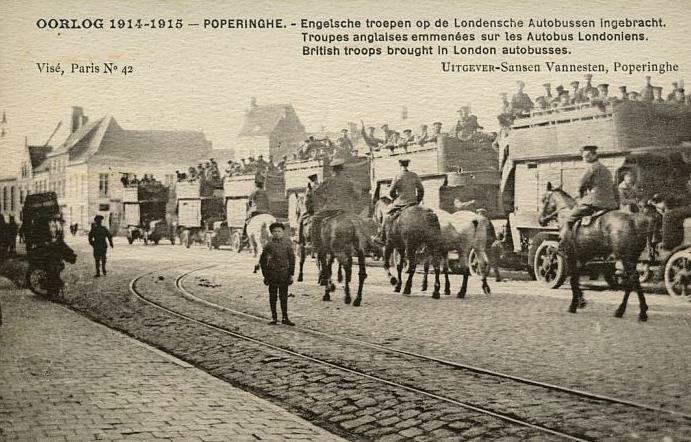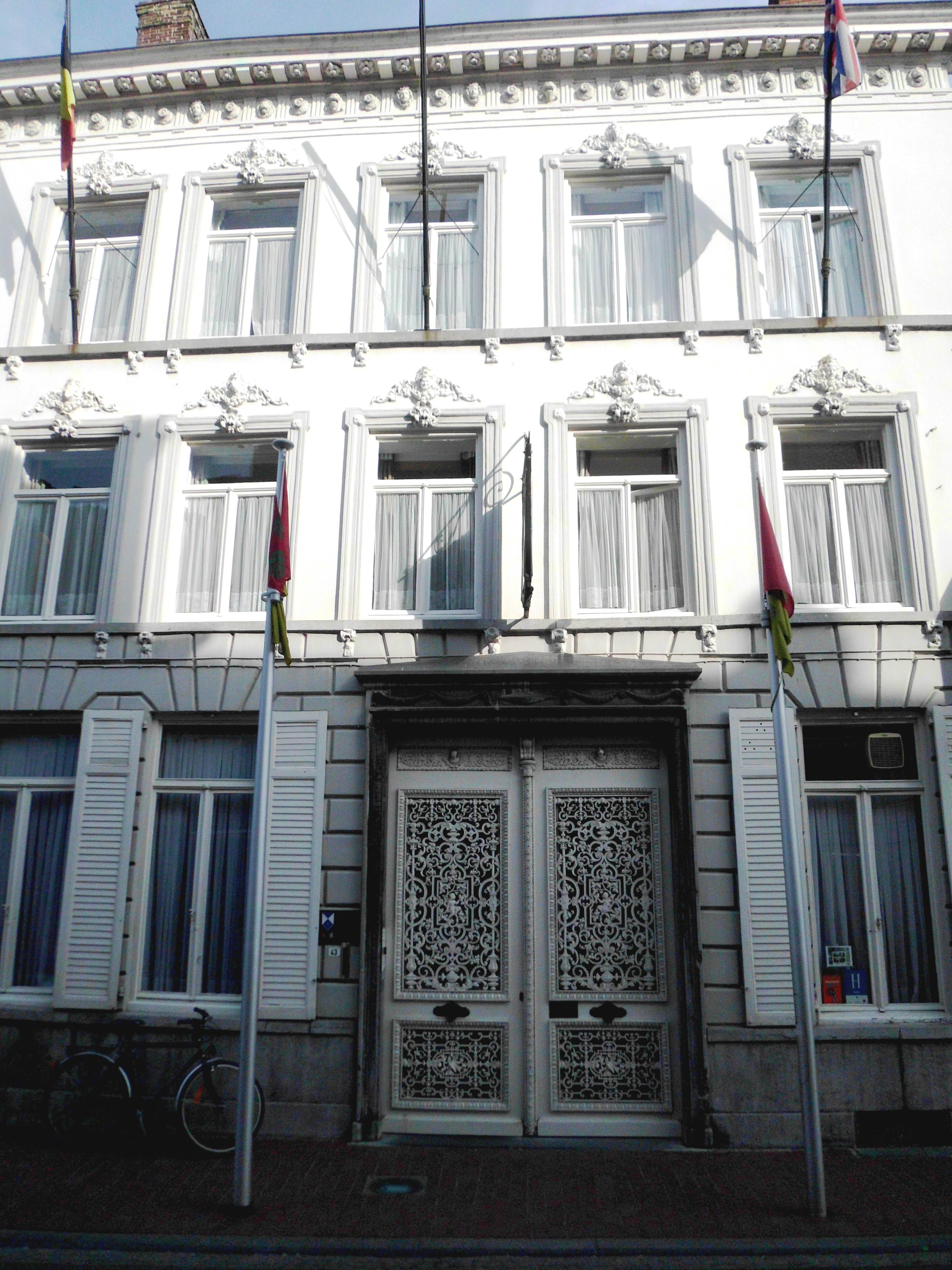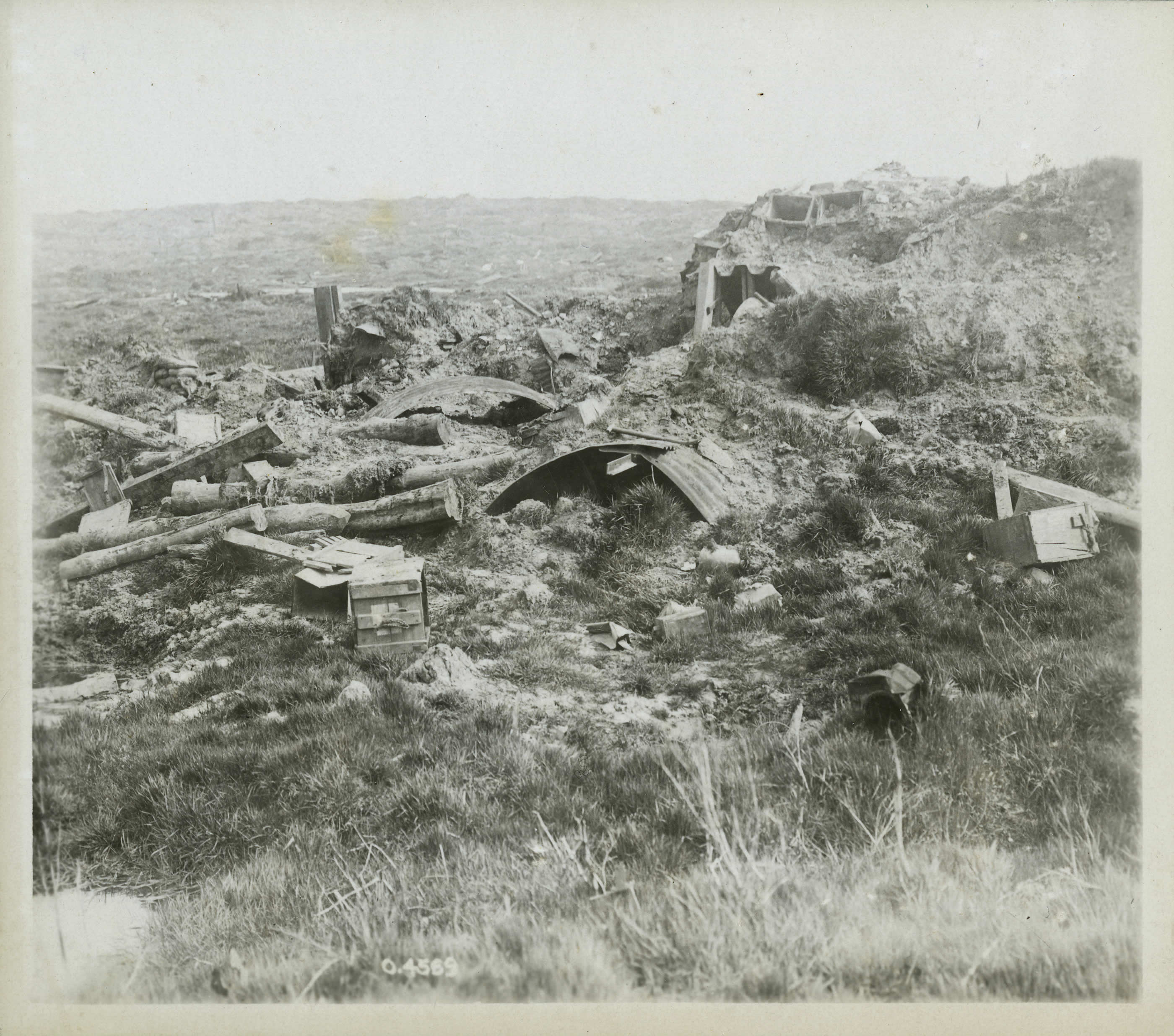|
Sanctuary Wood Cemetery
Sanctuary Wood Cemetery is a Commonwealth War Graves Commission (CWGC) cemetery for the dead of the First World War, 5 km east of Ypres, Belgium, near Hooge in the municipality of Zillebeke. Located off the main Ypres-Menin Road on ''Canadalaan'' (Canada Lane). The Canadian Hill 62 Memorial is 100 metres further down the road from the cemetery. Sanctuary Wood itself was named by British troops in November 1914 when it was used to shelter troops. Fighting took place in it in September 1915 and it was fought over by Canadian and German soldiers during the Battle of Mount Sorrel in early June 1916. Three small Commonwealth cemeteries were established in it between May and August 1915 but were largely obliterated during the Battle of Mount Sorrel. When the war finished, traces of one of them were found, containing 137 graves, and became the core of the present Sanctuary Wood Cemetery. It was greatly expanded between 1927 and 1932 with graves being moved in from surrounding ar ... [...More Info...] [...Related Items...] OR: [Wikipedia] [Google] [Baidu] |
Commonwealth War Graves Commission
The Commonwealth War Graves Commission (CWGC) is an intergovernmental organisation of six independent member states whose principal function is to mark, record and maintain the graves and places of commemoration of Commonwealth of Nations military service members who died in the two World Wars. The commission is also responsible for commemorating Commonwealth civilians who died as a result of enemy action during the Second World War. The commission was founded by Fabian Ware, Sir Fabian Ware and constituted through royal charter in 1917 as the Imperial War Graves Commission. The change to the present name took place in 1960. The commission, as part of its mandate, is responsible for commemorating all Commonwealth war dead individually and equally. To this end, the war dead are commemorated by a name on a headstone, at an identified site of a burial, or on a memorial. War dead are commemorated uniformly and equally, irrespective of military or civil rank, race or creed. The co ... [...More Info...] [...Related Items...] OR: [Wikipedia] [Google] [Baidu] |
Hooge (Ypres)
Hooge is a small village on the Bellewaerde Ridge, about 4 kilometres east of Ypres in the Flemish province of West Flanders in Belgium. Hooge and the nearby locations of Bellewaerde and Zillebeke were merged into Ypres in 1976. The economy of Hooge is dominated by tourism and agriculture. Tourists are attracted by the World War I battlefields as well as '' Bellewaerde'', the oldest operating theme park in Belgium. History World War I In World War I, the village belonged to one of the easternmost sectors of the Ypres Salient, which made it the site of intense and sustained fighting between German and Allied forces. From 1914 the front line of the Salient ran through the Hooge area and there was almost constant fighting in the area over the next three years, during which the village and the ''Château de Hooge'' (see below) were totally destroyed. [...More Info...] [...Related Items...] OR: [Wikipedia] [Google] [Baidu] |
World War I Cemeteries In Belgium
The world is the totality of entities, the whole of reality, or everything that exists. The nature of the world has been conceptualized differently in different fields. Some conceptions see the world as unique, while others talk of a "plurality of worlds". Some treat the world as one simple object, while others analyze the world as a complex made up of parts. In scientific cosmology, the world or universe is commonly defined as "the totality of all space and time; all that is, has been, and will be". Theories of modality talk of possible worlds as complete and consistent ways how things could have been. Phenomenology, starting from the horizon of co-given objects present in the periphery of every experience, defines the world as the biggest horizon, or the "horizon of all horizons". In philosophy of mind, the world is contrasted with the mind as that which is represented by the mind. Theology conceptualizes the world in relation to God, for example, as God's creation, ... [...More Info...] [...Related Items...] OR: [Wikipedia] [Google] [Baidu] |
Commonwealth War Graves Commission Cemeteries In Belgium
A commonwealth is a traditional English term for a political community founded for the common good. The noun "commonwealth", meaning "public welfare, general good or advantage", dates from the 15th century. Originally a phrase (the common-wealth or the common wealth – echoed in the modern synonym "public wealth"), it comes from the old meaning of "wealth", which is "well-being", and was deemed analogous to the Latin ''res publica''. The term literally meant "common well-being". In the 17th century, the definition of "commonwealth" expanded from its original sense of "public welfare" or " commonweal" to mean "a state in which the supreme power is vested in the people; a republic or democratic state". The term evolved to become a title to a number of political entities. Three countries – Australia, the Bahamas, and Dominica – have the official title "Commonwealth", as do four U.S. states and two U.S. territories. Since the early 20th century, the term has been used to name som ... [...More Info...] [...Related Items...] OR: [Wikipedia] [Google] [Baidu] |
Sanctuary Wood Museum Hill 62
The Sanctuary Wood Museum Hill 62, east of Ypres, Belgium is a private museum located in the neighborhood of the Canadian Hill 62 Memorial and the Sanctuary Wood Cemetery. The museum was owned by Jacques Schier, the grandson of the farmer who founded the museum and owned the site of the museum since before World War I and left it as he had founded it. He was known as 'Fat Jacques' to generations of visitors. The museum has a collection of World War I items, including a rare collection of 3-dimensional photographs, weapons, uniforms and bombs. A preserved section of the British trench lines is located behind the museum. The museum also has a small bar, café and gift shop. Image Gallery Image:025 - Hill 62 - Holes, Belgium.JPG, Hill 62 Shell Craters Image:Hill-62-Museum-Tranches-Ypres-Belgium.jpg, Hill 62 Trenches Image:Sanctuary Wood Museum August 2010.jpg, Shell casings and weapons inside the museum See also * Battle of Hill 60 * Hill 62 Memorial * Battle of Passchendae ... [...More Info...] [...Related Items...] OR: [Wikipedia] [Google] [Baidu] |
Celtic Cross
upright 0.75 , A Celtic cross symbol The Celtic cross is a form of ringed cross, a Christian cross featuring a nimbus or ring, that emerged in the British Isles and Western Europe in the Early Middle Ages. It became widespread through its use in the high crosses erected across the British Isles, especially in regions evangelised by Hiberno-Scottish missionaries, from the ninth through the 12th centuries. A staple of Insular art, the Celtic cross is essentially a Latin cross with a nimbus surrounding the intersection of the arms and stem. Scholars have debated its exact origins, but it is related to earlier crosses featuring rings. The form gained new popularity during the Celtic Revival of the 19th century; the name "Celtic cross" is a convention dating from that time. The shape, usually decorated with interlace and other motifs from Insular art, became popular for funerary monuments and other uses, and has remained so, spreading well beyond Ireland. Early history ... [...More Info...] [...Related Items...] OR: [Wikipedia] [Google] [Baidu] |
Tubby Clayton
Philip Thomas Byard Clayton (12 December 1885 – 16 December 1972), known as "Tubby" Clayton, was an Anglican clergyman and the founder of Toc H. Life and career Philip Clayton was born in Maryborough, Queensland, Australia, to English parentsSleevenotes to ''Tubby Talking: informal conversations with the Rev. Dr. P. B. Clayton, Founder Padre of Toc H'' (Toc H LP, TOC1A) who brought him back to England when he was two years old. Through both his father Reginald Byard Buchanan Clayton (1845–1927) and his mother Isabel Clayton, née Byard Sheppard (1848–1919), he is descended from George Sheppard, a clothier in Frome. He was educated at St Paul's School in London and at Exeter College, Oxford, where he obtained a First in Theology. After ordination as a priest of the Church of England, Clayton served as curate under Cyril Forster Garbett at St Mary's Church, Portsea, from 1910 to 1915. He then became an army chaplain in France and Flanders where, in 1915, he and ano ... [...More Info...] [...Related Items...] OR: [Wikipedia] [Google] [Baidu] |
Poperinghe
Poperinge (; , ; ) is a City status in Belgium, city and Municipalities of Belgium, municipality located in the Belgium, Belgian province of West Flanders, Flemish Region, and has a history going back to medieval times. The municipality comprises the town of Poperinge proper and surrounding villages. The area is famous for its hops and lace. The town Poperinge is situated about 13 km (8 miles) to the west of Ypres (Ieper). The region is famous for growing hops and furnishes 80% of Belgian production. The town is home to the national hop museum and is called "hops city", ''hoppe stad'' in Dutch, a play on ''hoofd stad'', the word for capital. A triennial hop festival and parade is held in the month of September. The local brew is known as Hommel (which means hops in the West Flanders dialect). The carillon in the tower of the town's oldest church, Sint-Bertinuskerk, was noted as one of the most beautiful in Flanders in medieval times. It was destroyed during wartime in 1677 and re ... [...More Info...] [...Related Items...] OR: [Wikipedia] [Google] [Baidu] |
Toc H
Toc H (also TH) is a registered charity and an international Christian movement. The name is an abbreviation for Talbot House, "Toc" signifying the letter T in the Royal Corps of Signals#History, signals spelling alphabet#History, spelling alphabet used by the British Army in World War I. A soldiers' rest and recreation centre named Talbot House was founded in December 1915 at Poperinghe, Belgium. It aimed to promote Christianity and was named in memory of Gilbert Talbot,Talbot House in Belgium Index page of Belgian Talbot House tourist site son of Lavinia Talbot and Edward Talbot (bishop), Edward Talbot, then Bishop of Winchester, who had been killed at Hooge, Belgium, Hooge in July 1915. Today Today Toc H works across the UK in partnership with local charities and resident organisations to deliver services to ...[...More Info...] [...Related Items...] OR: [Wikipedia] [Google] [Baidu] |
Nieuwpoort, Belgium
Nieuwpoort ( , ; ; ) is a City status in Belgium, city and Municipalities of Belgium, municipality located in Flemish Region, Flanders, one of the three regions of Belgium, in the province of West Flanders. The municipality comprises the town of Nieuwpoort proper, as well as Ramskapelle (Nieuwpoort), Ramskapelle and Sint-Joris, Nieuwpoort, Sint-Joris. On 1 January 2008, Nieuwpoort had a total population of 11,062. Its land area is 31.00 km² which gives a population density of 350 inhabitants per km². The current mayor of Nieuwpoort is Geert Vanden Broucke (Christen-Democratisch en Vlaams, CD&V) In Nieuwpoort, the Yser flows into the North Sea. It was also the home of a statue created by Jan Fabre called ''Searching for Utopia''. The Stadshalle Grain Hall (market hall) with its belfry was inscribed on the UNESCO World Heritage List in 1999 as part of the Belfries of Belgium and France site, owing to its historical civic (not religious) importance and its architecture. His ... [...More Info...] [...Related Items...] OR: [Wikipedia] [Google] [Baidu] |
Battle Of Mount Sorrel
The Battle of Mont Sorrel (Battle of Mount Sorrel) was a local operation in World War I by three divisions of the German 4th Army and three divisions of the British Second Army in the Ypres Salient, near Ypres in Belgium, from 2 to 13 June 1916. To divert British resources from the build-up being observed on the Somme, the XIII (Royal Württemberg) Corps and the 117th Infantry Division attacked an arc of high ground defended by the Canadian Corps in Flanders. The German forces captured the heights at Mount Sorrel and Tor Top, before entrenching on the far slope of the ridge. Following a number of attacks and counterattacks, two divisions of the Canadian Corps, supported by the 20th Light Division and Second Army siege and howitzer battery groups, recaptured the majority of their former positions. Background Mount Sorrel Located in the Ypres Salient, east of Ypres, Belgium and from Hill 60, the Battle of Mount Sorrel took place along a ridge between Hooge and Zwartele ... [...More Info...] [...Related Items...] OR: [Wikipedia] [Google] [Baidu] |
Hill 62 Memorial
The Canadian Hill 62 (Sanctuary Wood) Memorial is a Canadian war memorials, war memorial that commemorates the actions of the Canadian Corps in defending the southern stretches of the Ypres Salient between April and August 1916 including actions in battle at the Actions of St Eloi Craters, St Eloi Craters, Battle of Mont Sorrel, Hill 62, Mount Sorrel and Sanctuary Wood. These battles marked the first occasion in which Canadian divisions engaged in planned offensive operations during World War I. In those actions the Canadians reconquered vital high-ground positions that denied the Germans a commanding view of the town of Ypres itself. Historical Background Actions of St Eloi Craters On April 3, 1916, the Canadian Corps, including the newly formed and inexperienced 2nd Canadian Division, 2nd and 3rd Canadian Divisions, was dispatched to a stretch of the front south of Ypres at the Actions of St Eloi Craters, St. Eloi Craters. There they found themselves in a wasteland, in pla ... [...More Info...] [...Related Items...] OR: [Wikipedia] [Google] [Baidu] |






.jpg)